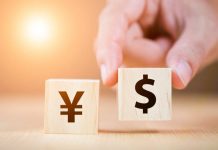Retail sales jumped 0.6% in March, rebounding from a 0.1% drop in February, and slightly beating market expectations for a 0.4% gain.
A 2% increase in motor vehicle & parts dealers led the way, but gains were relatively widespread across categories. This was borne out in the so-called ‘control group’ used in calculating GDP, which excludes gasoline, autos, building materials, and food services, and was up a healthy 0.4% on the month, matching market expectations.
Delving into the details, sales were up for furniture (0.7%), electronics and appliances (0.5%), health and personal care (1.4%), and non-store retailers (0.8%). Sales at non-store retailers are up 9.7% year-on-year, driven by healthy gains in online shopping.
On the negative side of the ledger, sales were down at building material & garden equipment supplies dealers (-0.6%), clothing and accessories stores (-0.8%) and sporting goods hobby, books and music (-1.8%). The latter two categories are areas of retail spending where online retailers have been gaining significant ground. Building material sales are up a healthy 5.3% year-on-year, and the decline in March likely reflects a give back after post-hurricane rebuilding activity in prior months. Sales were also down at gasoline stations (-0.3% m/m), but are still up almost 10% year-on-year, in large part reflecting higher prices at the pump.
Key Implications
Expectations were high for retail sales in March, and the data did not disappoint. It was the first full month where taxpayers would have felt the impact of tax cuts on their paychecks. Consumers responded by ramping up spending in a variety of areas, encouragingly for discretionary big-ticket items like cars and furniture, and also at online retailers.
The good report for March comes too late to save consumer spending for the first quarter, where residual seasonality is expected to hold spending to not much better than 1% annualized. The good news is that a strong March result helps set the second quarter up for a healthy rebound, with consumer spending likely to growth around 3%. Our latest Quarterly Forecast calls for healthy consumer spending through the remainder of 2018, with growth in the neighborhood of 2.5%-3.0% annualized.












